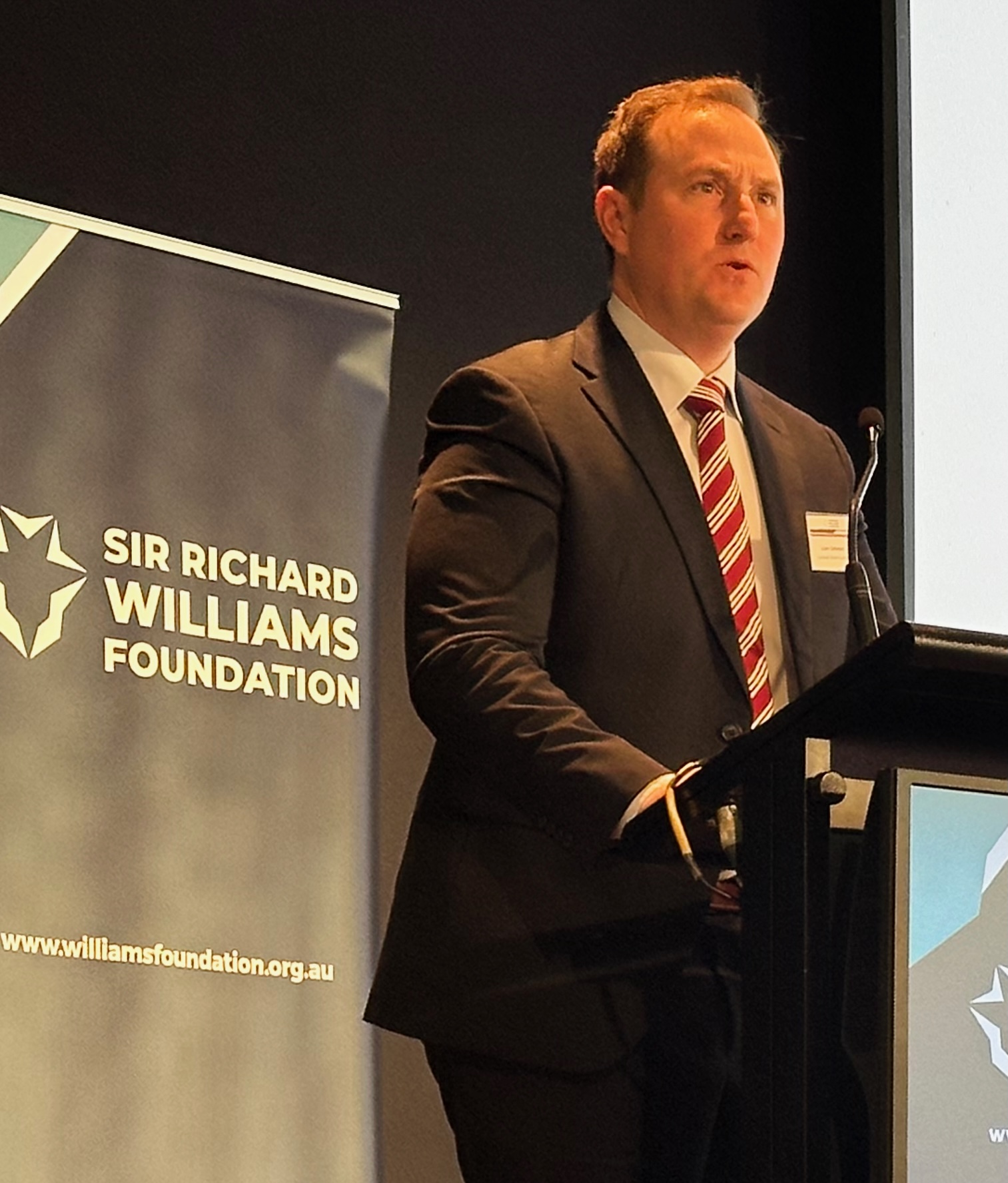Multi-Domain Operations in the Maritime Domain: The Significance of Digital Interoperability
The April 11, 2024 Williams Foundation Seminar focused on multi-domain operations in support of maritime security and defence. The progress made as the Australian Defence Force (ADF) has been building a fifth generation enabled force needs to be continued in the years ahead.
What is at stake is building an effective kill web enabled force which is built on a digital integration effort to allow the ADF to get best results from its deployed force in the operating area of significance.
We have just seen a real-world example of what this means as the Iran attack on Israel was deflected by a kill web force of sensors and shooters spread across a coalition in support of the defence of Israel.
I highlighted this future in a piece I wrote in 2012 and published in The Proceedings entitled the long reach of Aegis. That piece was focused on how F-35 integration with Aegis would yield significant results in defense capabilities.
And when I visited the HMAS Hobart in Sydney Harbour, I was reminded how important a common combat system is for integration across a coalition and one’s ability to shape digital integration across a multi-domain force.
After a visit to HMAS Hobart in 2018, this is what I wrote:
The ship introduces a new level of combat capability into the Royal Australian Navy in which the ship’s reach is significantly greater than any previous ship operational in the Aussie fleet because of its Aegis Combat system.
It is a key building block in shaping an integrated air-sea task force navy in that the capabilities onboard the ship can contribute to an integrated C2, ISR and strike grid in which the evolving capabilities of the ADF can cover a wider area of operation in the waters surrounding Australia or in service of missions further abroad.
As Rear Admiral Mayer noted during an interview I conducted with him while he was Commander of the Australian fleet:
“We are joint by necessity.
“Unlike the US Navy, we do not have our own air force or our own army. Joint is not a theological choice, it’s an operational necessity.”
What clearly this means is that the future of the Hobart class is working ways to operate in an integrated battlespace with land-based RAAF F-35s, Tritons and P-8s among other air assets.
Their future is not protecting the carrier battle group, as the Aussies have no carrier.
Rather, their future is “to provide air defence for accompanying ships in addition to land forces and infrastructure in coastal areas, and for self-protection against missiles and aircraft.”
The skill sets being learned to operate the ship, notably the workflow on board the ship, in terms of the use of data, ISR and C2 systems, working situational awareness throughout the work stations onboard the ship, are foundational for other ships coming to the fleet.
With the coming of the Brisbane, the HMAS Hobart will no longer be a single ship but the lead into a class of ships.
And with the Australian decision with regard to its new frigates which will leverage the Aegis combat system capability as well, the HMAS Hobart has become the lead into a whole new approach to how the Australian fleet will shape its combat networks as well.
The importance of continuing to build integratability across the fleet was emphasized at the seminar by Liam Catterson in his presentation. He is a former Royal Australian Naval officer who served on the Hobart and operated the Aegis combat system. He is now with Lockheed Martin Australia.
In his presentation he highlighted the significance of the Aegis Combat System for fleet and ADF integrability with the U.S. Navy and Australia’s other core maritime allies, Japan and South Korea, all of whom operate Aegis and F-35s.
Catterson underscored the following:
It is important to note that the current fleet of three Hobart-class DDGs are interoperable with the Aegis equipped platforms of the USN, and other Aegis equipped coalition partners, such as the Japanese Maritime Self-Defence Force and the Republic of Korean Navy. This point was best illustrated through the first operational deployments within the Indo-pacific supporting 7th fleet activities, becoming a integral platform in the INDOPACOM theatre as opposed to previous deployments.
This can be attributed in part to Aegis being as much a fighting philosophy as it is a Combat Management System, melding the concepts of a layered defensive posture, through depth of fire, sensor optimisation, autonomy and integrated fire control through Cooperative Engagement Capability.
Without a CMS, a warship ceases to be that; no longer an instrument of deterrence. Without an interoperable CMS, a warship is a well-informed target and a potential hindrance to the joint force. This is a critical distinction when considering the acquisition of any future classes of surface combatants. The density of VLS cells in an Aegis destroyer is force projection however it is the Aegis Combat System that makes it a force multiplier.

I had a chance to follow up with Catterson in a meeting at his office in Canberra on 15 April 2024. We discussed the way ahead with the digital backbone of a kill web force and the contribution of the common combat system built around Aegis for the Australian fleet and its integration with those of its allies in the region.
We started by discussing how the Aegis combat system enabled significant interoperability across the allied forces in the Pacific.
As Catterson noted: “One of the key things about the Aegis combat system operating across the Indo Pacific is that it provides a strong backbone of interconnectivity and interoperability from Australia all the way through the north through to Japan, and then across the Sea of Japan to the Republic of Korea as well.
“The Aegis combat system provides a common language across the Indo Pacific fleets allowing for the for the fleets to deploy and operate together and to conduct combat operations in a coherent manner.”

I then raised a key question. When one mentions the Aegis combat system at a seminar like we had at Williams, one might think that it is special pleading for a specific company, in this case Lockheed Martin.
But over the years the combat system has changed dramatically and it is clearly the US Navy driving the development with Lockheed a close partners, but it is essentially a US Navy combat system today.
Catterson provided an explanation of this development.
“One of the strengths of Aegis is it was developed by the US Navy, and it has been a strong customer holding corporations to account to deliver what they wanted. Lockheed has been fortunate to be in lockstep with the US Navy, but it’s the US Navy driving these changes for it allows them to embark on the next generation of an integrated combat system for the fleet. This will enable them to operate as a system of systems to allow for interoperability, but also to enable cost effective and rapid roll out of developmental changes.”
He closed with this thought which is very relevant to the future development of ADF multi-domain capabilities:
“One of the strengths of the Aegis program is leveraging the operational experience from not only the U.S. but also other Aegis users as well. This allows for upgrading the fleet in a spiral development process. And this allows countries to remain in lockstep with each other. This means that integration costs are spread out over different partner nations in that manner.”
Also, see the following:
https://thediplomat.com/2014/06/would-you-like-an-f-35-to-go-with-your-aegis/
https://apps.dtic.mil/sti/tr/pdf/ADA498159.pdf

